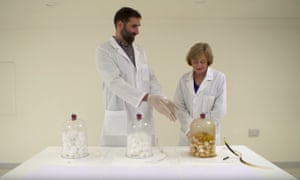Daily e-cigarette use shows 'clear benefit' in helping smokers to quit
A new study published today from King's College London highlights the 'clear benefit' of using e-cigarettes daily in order to quit smoking
A new study published Tuesday 10 March, No Smoking Day, from King's College London highlights the 'clear benefit' of using e-cigarettes daily in order to quit smoking, and supports their effectiveness when compared to other methods of quitting, including nicotine replacement therapy or medication.
Although the number of people in England who smoke has continued to fall in recent years, tobacco smoking is still the leading preventable cause of premature death and disease - killing nearly 75,000 people in England in 2019.
While e-cigarettes have been around for more than a decade, evidence on their effectiveness for helping people to quit smoking is still limited. Recent studies have produced inconsistent findings or failed to measure important factors such as frequency of use or the effect of different types of e-cigarette on attempts to quit.
In their Cancer Research UK-funded study, the researchers analysed data from an online survey of more than 1,155 people, which included smokers, ex-smokers who had quit within one year prior to completing the survey, and e-cigarette users.
Five waves of data were collected between 2012 and 2017. The researchers analysed the effectiveness of e-cigarettes in aiding abstinence from smoking for at least one month at follow-up, and at least one month of abstinence between the first survey and subsequent follow-up waves.
Published today in the journal Addiction, the study found that people who used a refillable e-cigarette daily to quit smoking were over five times more likely to achieve abstinence from tobacco smoking for one month, compared to those using no quitting aids at all.
Similarly, people who used a disposable or cartridge e-cigarette daily were three times more likely to quit for one month, compared to those using no help.
Daily use of e-cigarettes was also more effective for quitting than other evidence-based methods of quitting - including nicotine replacement therapy, medication such as bupropion or varenicline, or any combination of these aids. None of these methods were associated with abstinence from smoking at follow-up, compared to using no help at all. However, in a secondary analysis, prescription medicine was associated with achieving at least one month of abstinence from smoking.
Dr Máirtín McDermott, Research Fellow at King's College London's National Addiction Centre and lead author of the study, said: "Our results show that when used daily, e-cigarettes help people to quit smoking, compared to no help at all. These findings are in line with previous research, showing that e-cigarettes are a more effective aid for quitting than nicotine replacement therapy and prescribed medication.
"It's important that we routinely measure how often people use e-cigarettes, as we've seen that more sporadic use at follow up - specifically of refillable types - was not associated with abstinence."
Dr Leonie Brose, Reader at King's College London's national Addiction Centre added: "Despite the World Health Organization's (WHO) cautious stance on e-cigarettes, studies like ours show they are still one of the most effective quitting aids available.
"The WHO is especially concerned about refillable e-cigarettes, as these could allow the user to add harmful substances or higher levels of nicotine. However, we've shown that refillable types in particular are a very effective quitting aid when used daily, and this evidence should be factored into any future guidance around their use."
King's College London is one of the top 10 UK universities in the world (QS World University Rankings, 2018/19) and among the oldest in England. King's has more than 31,000 students (including more than 12,800 postgraduates) from some 150 countries worldwide, and some 8,500 staff.
The Institute of Psychiatry, Psychology & Neuroscience (IoPPN) which is the premier centre for mental health and related neurosciences research in Europe. It produces more highly cited outputs (top 1% citations) on mental health than any other centre (SciVal 2019) and on this metric we have risen from 16th (2014) to 4th (2019) in the world for highly cited neuroscience outputs. World-leading research from the IoPPN has made, and continues to make, an impact on how we understand, prevent and treat mental illness and other conditions that affect the brain. https:/





